This is a comprehensive agricultural insurance model, operated methodically and humanely. After more than two decades, this policy has not only helped farmers stand firm in the storm but also paved the way for high-tech agriculture and sustainable development.
When natural disasters are no longer a fear
On a late June morning, the rain was drizzling on the rice fields in Naju County, Jeollanam-do Province, a fertile plain in southern South Korea. Mr. Kim Dong-su, 58, owner of a nearly 4-hectare rice and chili farm, stood on the porch, silently watching each heavy drop of water fall onto the field banks. “Ten years ago, every rain like this made me lose sleep. Now I feel more secure because my fields are insured,” he laughed, his voice hoarse.
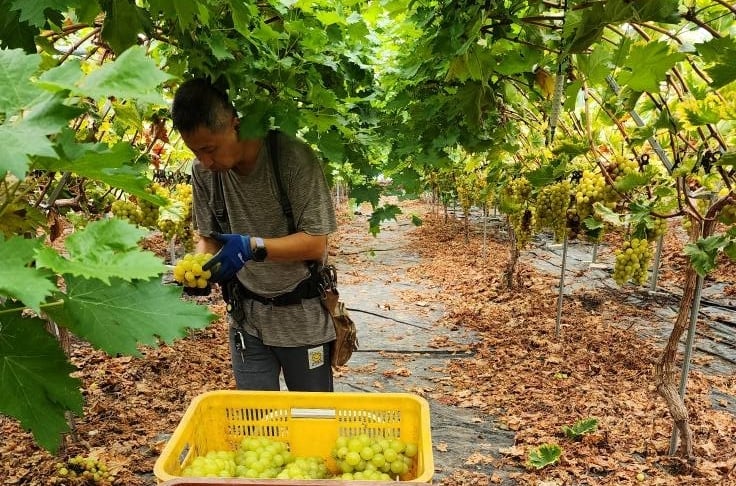
A grape farm in South Korea. Photo: Le San.
Mr. Kim’s story is not just about one farmer. It reflects part of a larger picture: South Korea’s agricultural insurance policy, a pillar that has helped farmers in the country maintain production amid increasingly unpredictable weather.
In the early 2000s, when climate change began to take a heavy toll on agriculture, the Korean government enacted the Agricultural Insurance Act. The program officially went into operation nationwide in 2001, initially covering only a few crops such as apples, pears, and rice. The goal was clear: to reduce the financial burden on farmers when natural disasters struck, while also encouraging them to invest in technology and produce more sustainably. And the policy worked very well.
According to the Ministry of Agriculture, Forestry and Fisheries of Korea (MAFRA), as of 2024, more than 550,000 farming households will participate in agricultural insurance, accounting for nearly 50% of crop households and more than 94% of livestock households. The government and local governments support 50-70% of insurance premiums, up to 80% in high-risk areas, the rest is shared by local governments and farmers. In high-risk areas such as the Gangwon Mountains or the Jeolla Plain, the support level can be up to 80%.
Last year, a sudden hailstorm damaged more than a third of his chili crop. “Without insurance, I would have lost everything. But thanks to the crop insurance package, I was compensated nearly 15 million won (about 260 million VND). The feeling of receiving compensation is not just about money, but also about peace of mind because I will not be left behind when nature strikes,” he said.
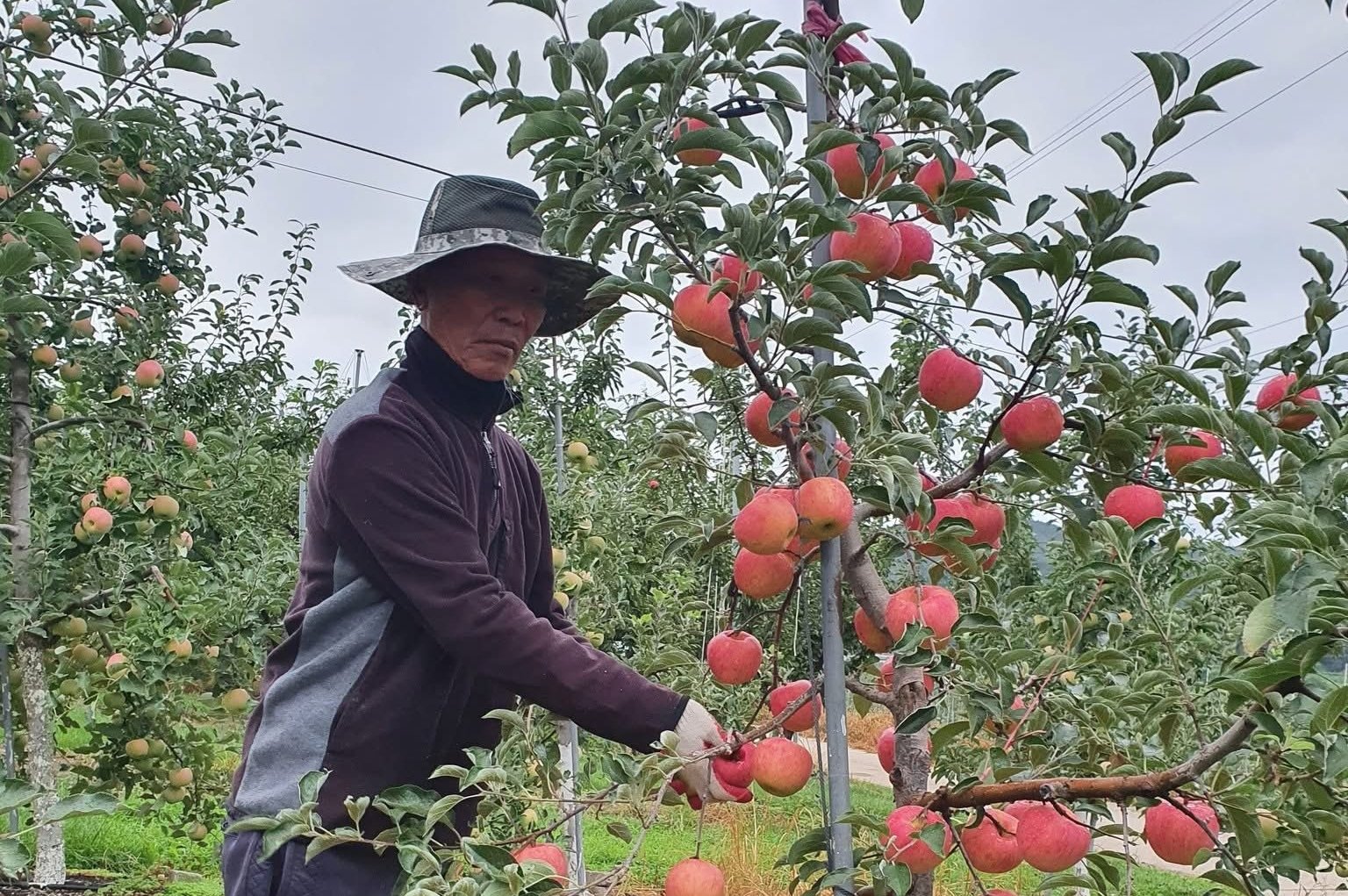
Thanks to agricultural insurance, Korean farmers no longer have to worry about natural disaster risks. Photo: Le San.
Looking at Mr. Kim leisurely making tea and checking his phone for the weather forecast, I suddenly thought that perhaps peace of mind is the greatest benefit that agricultural insurance brings, more than compensation.
In the center of Naju town (Jeollanam Province), the National Agricultural Cooperatives of Korea Branch (NongHyup) is the unit assigned to directly implement agricultural insurance nationwide. On the desk full of documents, Ms. Park Mi-young, an officer in charge of agricultural insurance, carefully explained: "Agricultural insurance in Korea is not provided by a single private company. It is a cooperative model between the government, NongHyup and large insurance companies. The government issues policies, supports the budget and controls risks, and NongHyup is the 'arm' that directly implements it to each farming household."
According to Ms. Park, the agricultural insurance implementation process begins when farmers register at the local branch. Officials will survey the area, type of crop or livestock, and then assess the risk based on meteorological data and average yields over the past three years. “Each type of crop has its own spreadsheet, for example, rice, pears, peppers, watermelons, or dairy cows. When a natural disaster occurs, we send people to the scene to assess the damage and then prepare documents to pay insurance benefits. The entire process is now 80% digitalized, so it is much faster than before,” Ms. Park said.
The Korean government also plays a decisive role in regulating and ensuring the sustainability of the insurance fund. Each year, the Ministry of Agriculture, Forestry and Fisheries (MAFRA) allocates a budget to support insurance premiums for farmers and also sets up a reserve fund to pay when major natural disasters occur. In years when losses exceed forecasts, the government will make additional payments to avoid interruptions in insurance benefit payments to farmers.
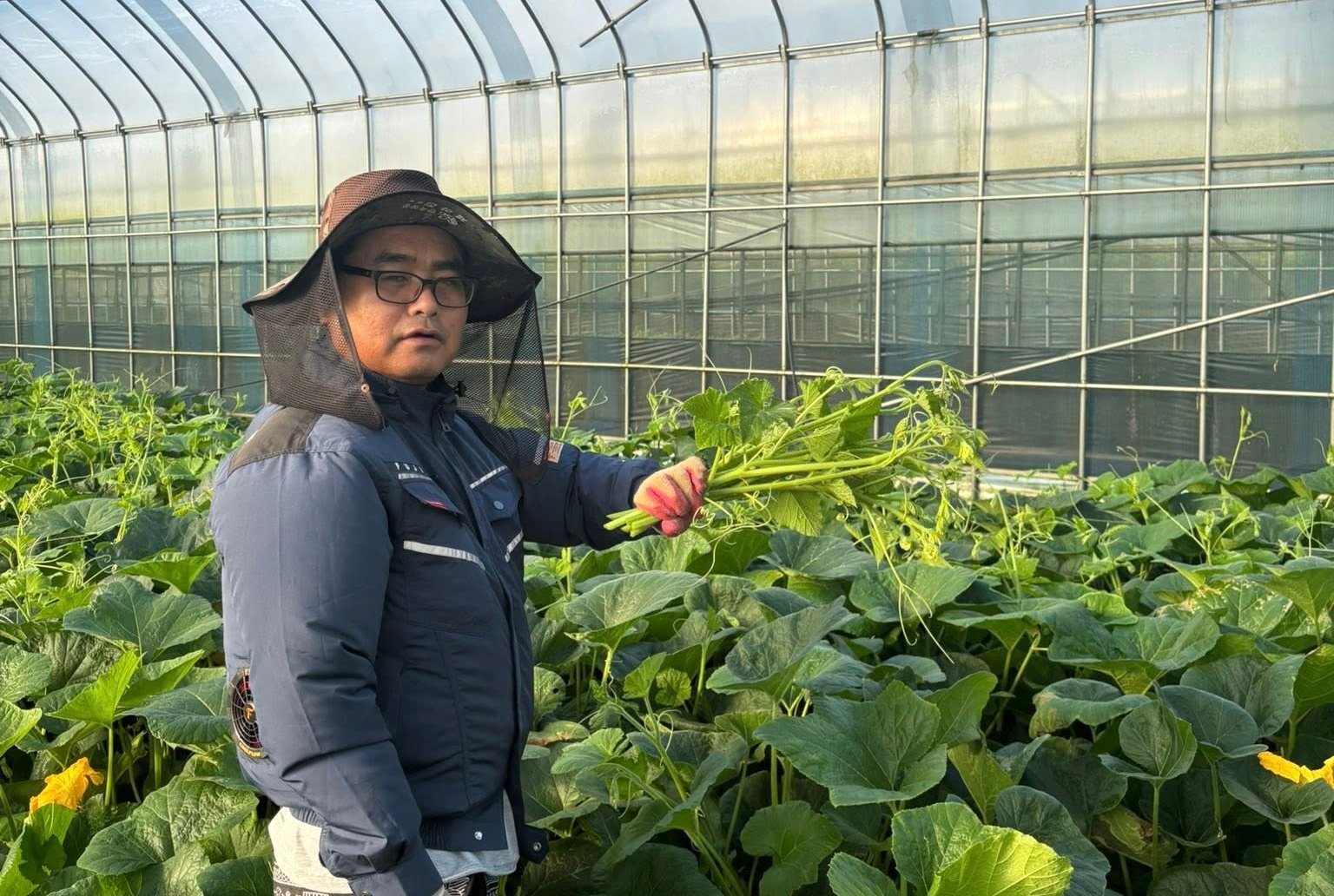
Korean farmers see agricultural insurance as a companion. Photo: Le San.
An interesting detail is that this system operates in parallel with the Agricultural Bank (NongHyup Bank) - where farmers can borrow capital for production. When participating in insurance, farmers receive preferential interest rates or loan conditions. "Many people consider insurance as a 'safety ticket' to be able to invest more boldly. We always tell farmers that planting trees is like driving, you cannot do without a seat belt," said Ms. Park.
According to MAFRA statistics, as of 2024, there will be more than 120 different types of agricultural insurance products being deployed – from crops, livestock, greenhouses to agricultural equipment. Each year, the total value of insurance benefits paid out is more than 1.3 trillion Won (equivalent to nearly 25 trillion VND).
Notably, South Korea does not develop agricultural insurance as a short-term welfare program but considers it as part of a modern agricultural development strategy. This policy is linked to digital transformation, satellite data, weather sensors and early warning systems - all aimed at minimizing risks for farmers in production.
On the wall of Ms. Park's room, a wooden board has a simple inscription: "No farmer should suffer alone." Perhaps, that is the core philosophy that helps Korean agricultural insurance not only exist but also become a familiar part of life in the fields.
Insurance is not a cost-increasing trap
On the small road leading into Gurye Valley, Jeollanam-do Province, transparent glass roofs stretch out like mirrors. Under the gentle early autumn sun, Lee Hye-jin, 45, is picking strawberries in her nearly 2-hectare garden. Her smile is still a bit shy when talking about last year's typhoon.
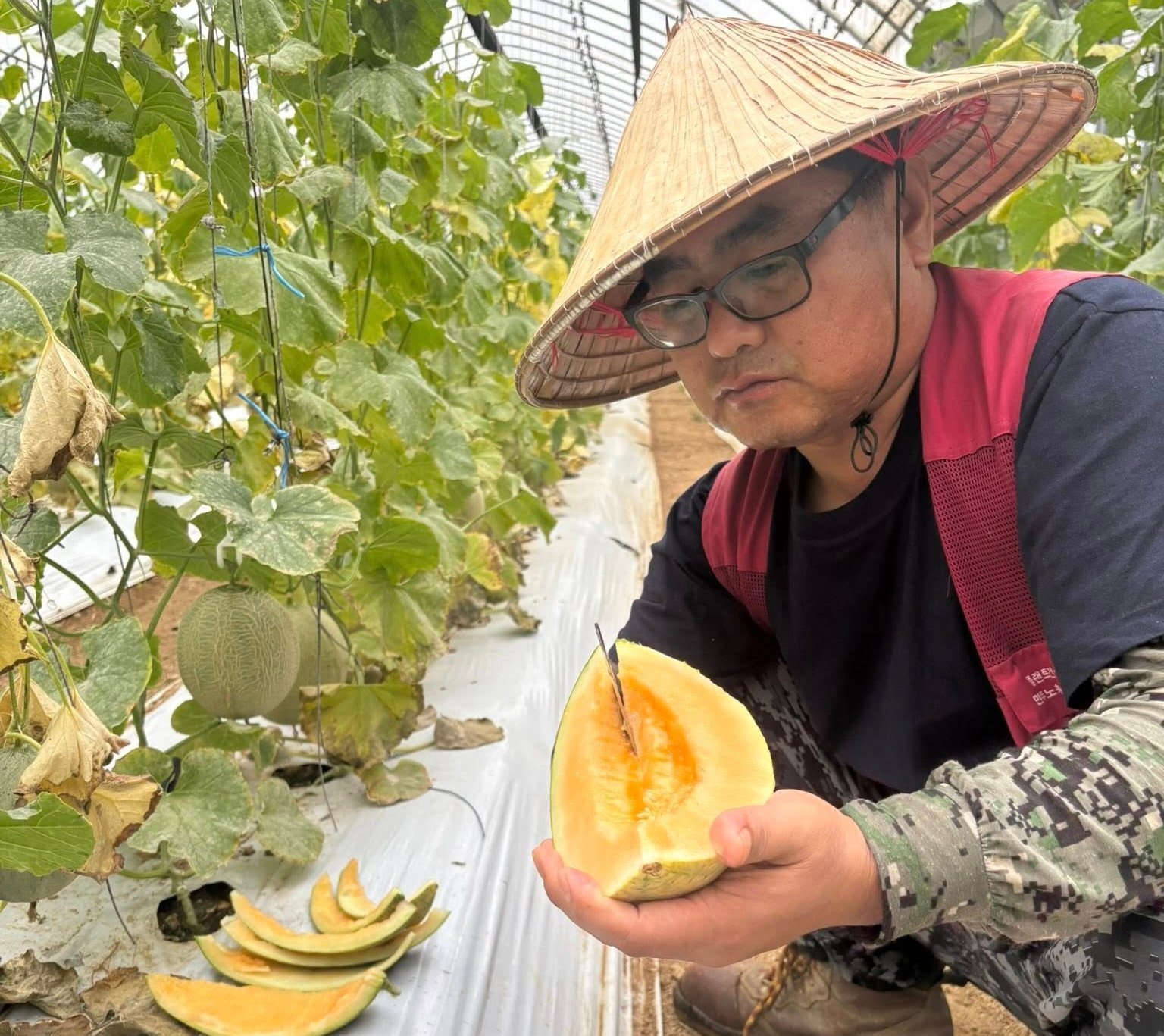
Thanks to agricultural insurance, Korean farmers have boldly invested in agriculture, especially in the production of high-tech goods. Photo: Le San.
“In just one night, the wind was so strong that it blew away the greenhouse roof. At that time, I thought it was ruined because I invested more than 1 billion won in this new system. But luckily, I had purchased agricultural insurance. After NongHyup officials came to check, just over three weeks later, I received more than 400 million won in insurance benefits. Thanks to that, I was able to rebuild the greenhouse and continue production the following season,” said Lee Hye-jin, removing nylon ropes torn by the storm.
When asked about insurance premiums, Park Mi-young smiled: "There has been an increase, but not to the point where farmers give up."
Insurance premiums are calculated based on the history of insurance benefits payment, the risk level of the area and the type of crop. If the household receives compensation for many consecutive years, the risk coefficient will increase by 5-15%. However, the Government supports 50-70%, the risk area is up to 80% so the actual increase that people have to bear is very small.
If the damage is a large-scale natural disaster, the following year's premium remains the same, while households that apply risk reduction measures (installing roofs, sensors, changing varieties, etc.) will receive a reduced premium as a reward. "Insurance is not a trap that increases costs, but a safety framework that helps farmers be more responsible," Ms. Lee Hye-jin explained.
Ms. Lee is not alone. In many rural areas of South Korea, natural disasters used to be the biggest fear that prevented farmers from expanding their production. But since the agricultural insurance program was launched, that fear has gradually given way to confidence.
According to statistics from the Ministry of Agriculture, Forestry and Fisheries of Korea, on average, there are more than 25,000 compensation cases for agricultural damage caused by hail, storms, droughts or epidemics each year. Thanks to that, the reinvestment rate of farmers has increased by more than 30%, especially among young households - those who previously often quit the profession because of the high risks.
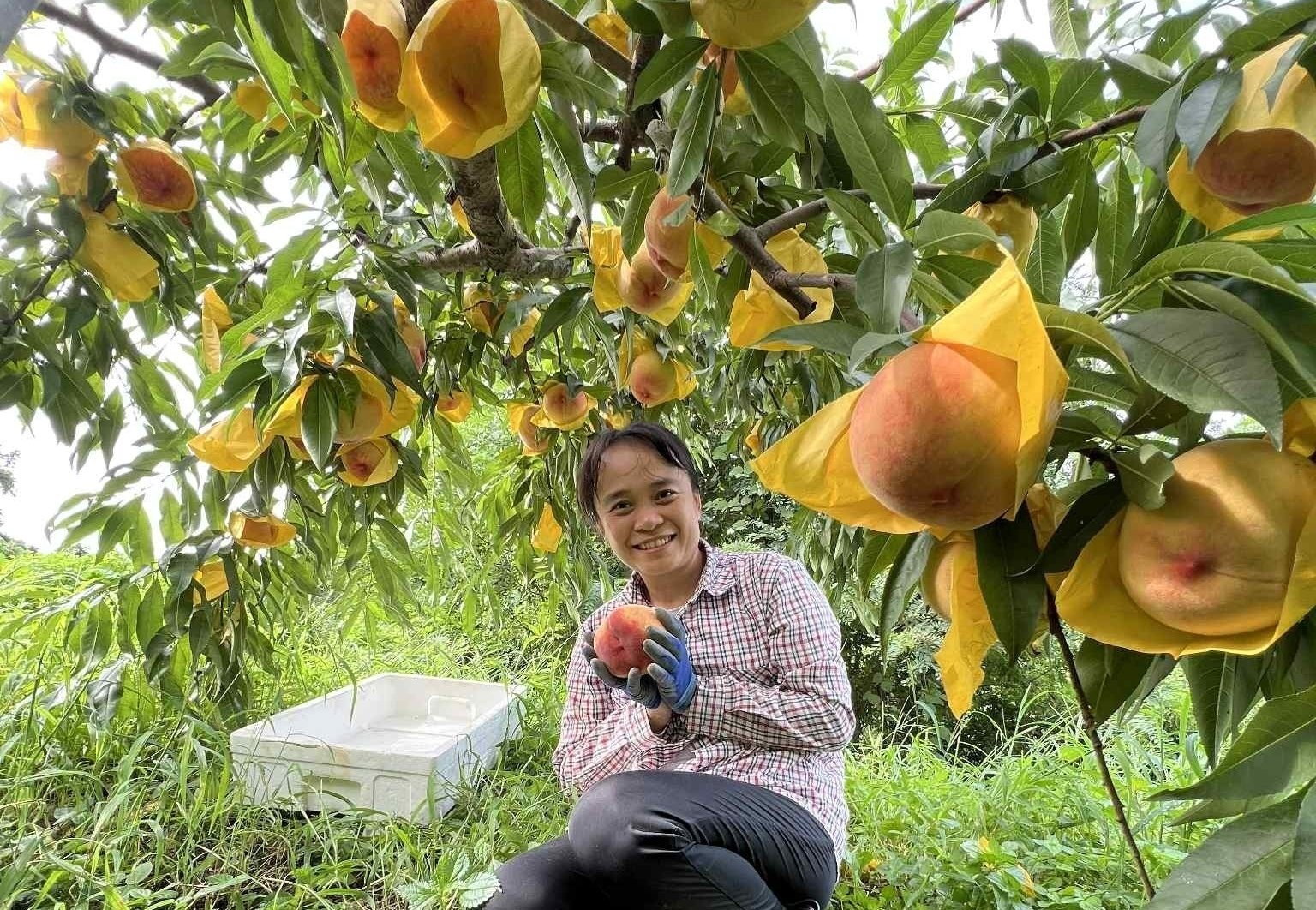
Korean farmers do not see insurance as a burden, but rather feel more confident when investing in agriculture. Photo: Le San.
Choi Min-ho, 62, a pear farmer in the Chungcheong region, recalls the time before insurance: “Every time a typhoon came, I couldn’t sleep. One year, all the fruit fell off, but I still had to pay off the bank loan. Now it’s different, I feel much more secure. If the crop fails, insurance will cover it. The children are willing to go back to farming.”
I asked Mr. Choi if he thought insurance was a lifesaver. He laughed: “No, it doesn't make you richer. But it keeps you from becoming poor just because of a storm."
Many Korean experts assess that the biggest impact of agricultural insurance is not only in the amount of compensation but also in the change in farmers' psychology. When they are no longer afraid of losing everything, they dare to experiment with new techniques, invest in new varieties and cooperate in large-scale farm models. This helps the average productivity of the Korean agricultural sector increase by nearly 15% in the period 2010 - 2020.
The government does not do it for them, but plays the role of underwriting risks and creating legal corridors. Insurance companies do not just sell products but accompany farmers from forecasting to compensation. Farmers, whether in the Gangwon Mountains or the Jeolla Plain, have access to information, data and technology to proactively protect themselves.
Looking back at Vietnam, the agricultural insurance program has been piloted many times but is still limited in scale, awareness and support mechanisms. I think that if we learn from the Korean model, combining insurance, digital technology and tripartite risk sharing, we can completely build a sustainable agricultural insurance system.
When technology and policy go together in the fields
On afternoons in Gurye, as the sun sets over the greenhouse roofs, more young farmers can be seen with their phones in hand checking the “NongHyup Smart Insurance” app, where they can track weather conditions, insurance contracts, and even request damage assessments online.
A young farmer smiled and said: “Insurance is like a companion now. It not only protects but also encourages us to think bigger."
And perhaps that is what has created a change in farmers' production thinking - the most profound effect that agricultural insurance policies have brought. At the National Agricultural Disaster Monitoring Center in Sejong City, large screens display weather data, rainfall, satellite images and color maps of growing areas nationwide.
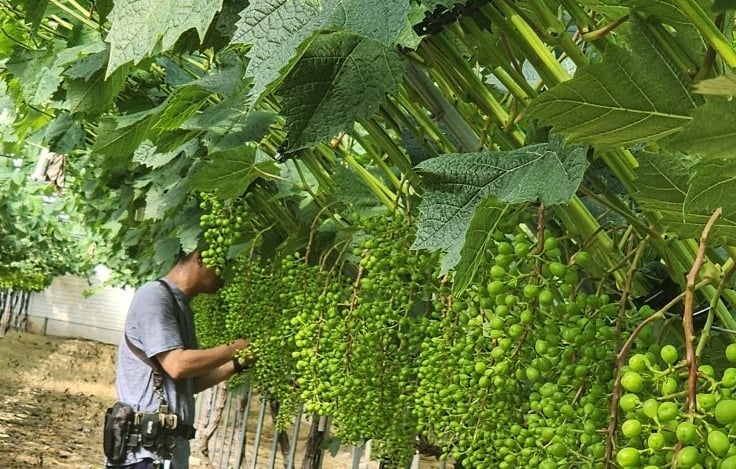
After more than 20 years of implementation, Korean agricultural insurance has become a real "economic shield". Photo: Le San.
“This is where we forecast and warn of risks early so that agricultural insurance can operate more effectively. Whenever there is a storm, frost or drought, we update the insurance system with real-time data. Thanks to that, appraisal and compensation become much faster and more accurate,” said Mr. Han Jae-ho, Head of the Supervision Department.
Since 2018, the Korean government has been promoting the “Smart Agriculture + Insurance” program, which combines agricultural insurance with digital transformation. IoT sensors, greenhouse surveillance cameras, meteorological data analysis systems and GPS positioning systems have been installed everywhere. All of this data is directly connected to the systems of the Agricultural Development Agency (RDA) and NongHyup to help identify risks early and support farmers to respond before damage occurs.
“We don’t just want to pay farmers when they fail, we also want to help them prevent it in advance. The goal is to turn agricultural insurance into a proactive risk management tool, not just a passive compensation,” Mr. Han said.
The Korean government currently spends more than 500 billion won a year (equivalent to about 9.5 trillion VND) on agricultural insurance. Of this, 70% is spent on supporting insurance premiums for farmers, the rest is invested in data systems, meteorological forecasts and human resource training. Each locality – from Gangwon to islands like Jeju – has an agricultural support center with a permanent team of engineers, insurance officers and meteorological experts.
In Jeongseon County (Gangwon Province), Mr. Yoo Chang-bok, an agricultural official with more than 20 years of experience, said: "We go to each commune, instruct people to install weather warning applications, and check the conditions to participate in insurance. Every year when there is late snowfall or unusual hail, the government immediately notifies people to take photos of the scene and send a request for insurance benefits right on their phones."
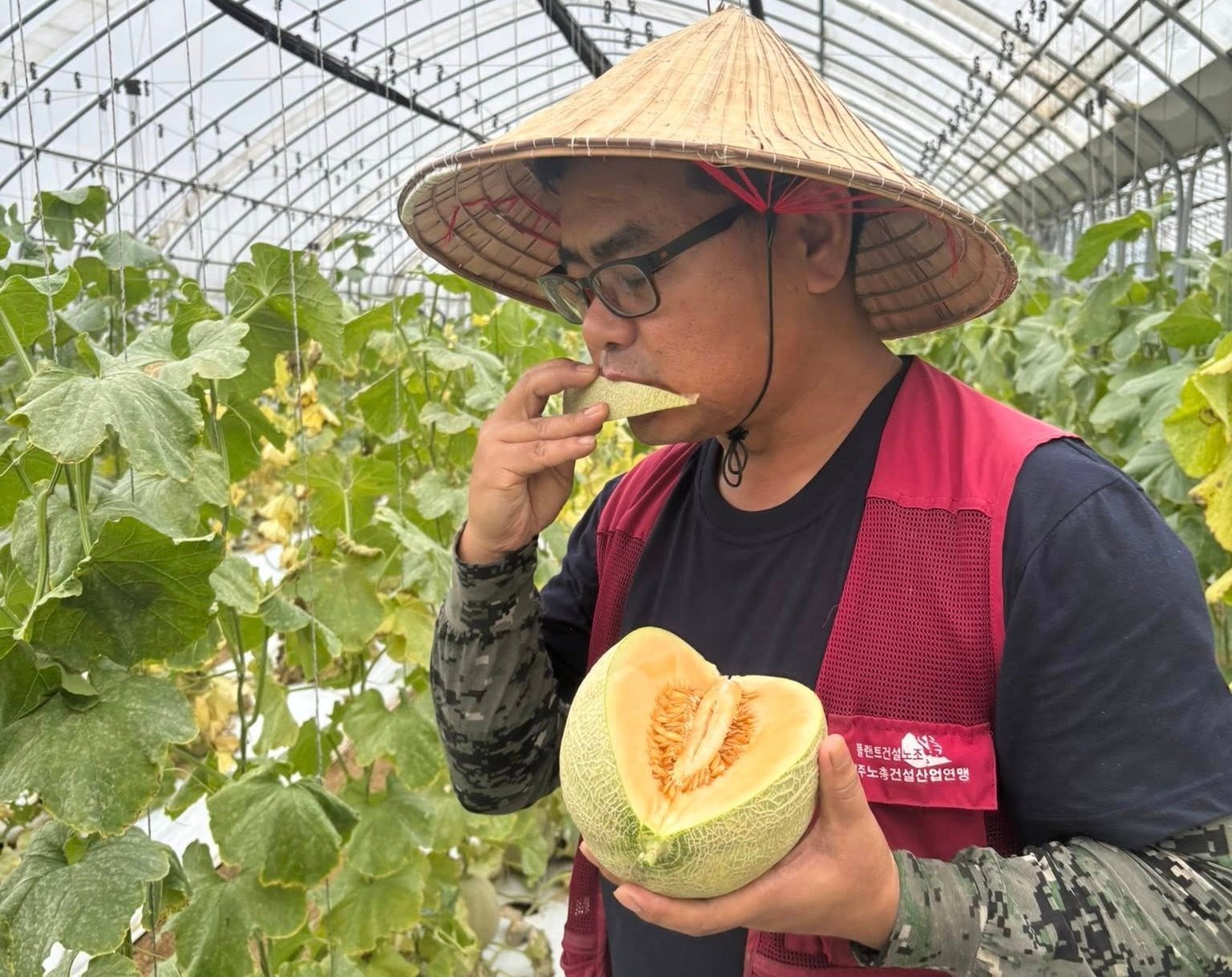
The cooperation between insurance companies, the government and farmers' sharing is a solid foundation for agricultural insurance to develop strongly in Korea. Photo: Le San.
The coordination between the central government, local governments and insurance companies helps the whole system operate smoothly. When there is major damage, the government automatically activates the Emergency Support Fund, ensuring that farmers receive money within 30 days. Thanks to that, in 2022-2023, although Korea was heavily affected by Typhoon Hinnamnor and floods in Jeolla, the rate of timely insurance benefit payment reached more than 96% - a figure that many countries should learn from.
On the large screen of the National Agricultural Disaster Monitoring Center in Sejong City, green dots of light shine, each representing an insured agricultural area. Looking at them, one can understand why Korea has been able to maintain the stability of its agricultural industry in such harsh weather. They have not only policies but also technology and the perseverance of an entire system.
“We grow rice, grow chili peppers, and so on, and we all know that the harvest is never certain. But the most certain thing is that if we encounter risks, there will be people standing by our side,” said Kim Dong-su, a farmer in Naju.
It is this simple belief that has helped Korean farmers change their way of thinking about farming. They no longer see agriculture as a gamble that depends on the weather, but as an industry that can be calculated, invested in, and protected by scientific mechanisms and policies.
After more than 20 years of implementation, Korean agricultural insurance has become a real “economic shield”. According to data from the Korean Ministry of Agriculture, Forestry and Fisheries, this program helps reduce the average financial loss of farmers by 40% each year, while maintaining a stable agricultural supply chain during major natural disaster years.
Not only that, insurance also creates a foundation for high-tech agriculture because people dare to invest more, businesses dare to cooperate more and banks dare to lend more. And most impressive is the way Korea combines three factors: State - business - farmers in the same unified mechanism. This model is evaluated by OECD as one of the three most comprehensive agricultural insurance systems in Asia (along with Japan and China).
Starting in 2025, the Ministry of Agriculture, Food and Rural Affairs of Korea (MAFRA) will expand the agricultural income insurance program from piloting 9 agricultural products to serving all farmers for those products, and will add 6 new products such as rice, cabbage, radish...
In addition, MAFRA reported that there will be 5 improvements in increasing/decreasing insurance premiums and expanding coverage, including new risks such as pests, lack of light, and animal damage.
Source: https://nongnghiepmoitruong.vn/la-chan-bao-ve-nong-dan-d780312.html




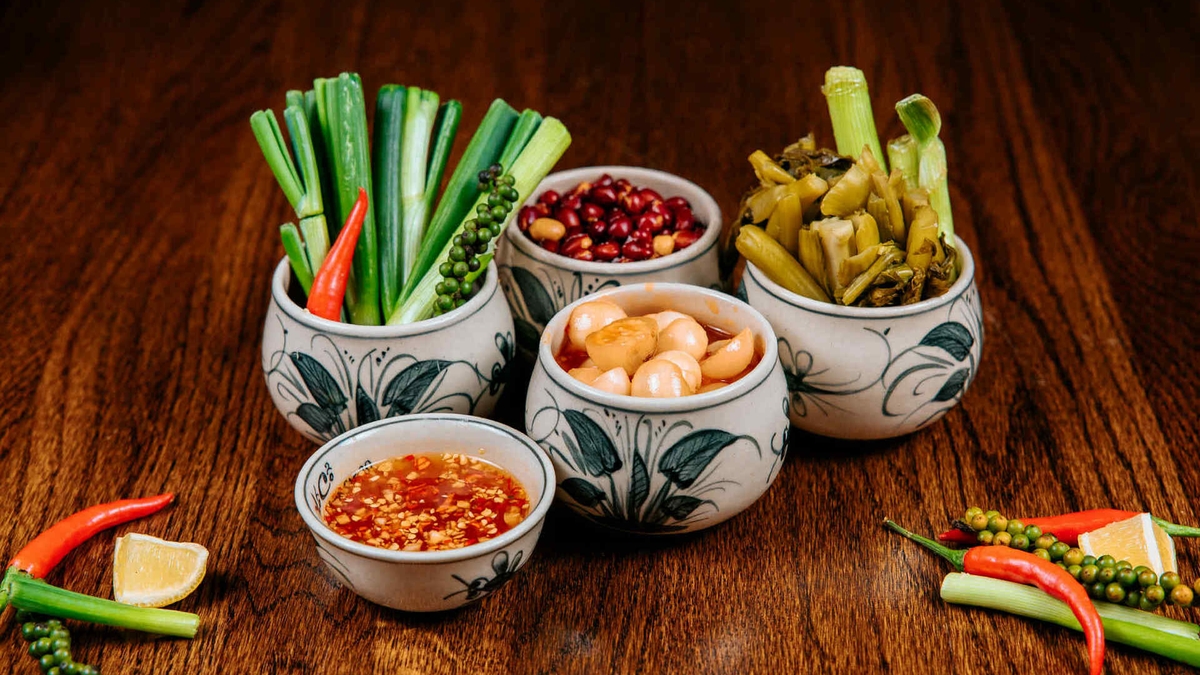
![[Photo] Prime Minister Pham Minh Chinh attends a conference to review one year of deploying forces to participate in protecting security and order at the grassroots level.](https://vphoto.vietnam.vn/thumb/1200x675/vietnam/resource/IMAGE/2025/11/12/1762957553775_dsc-2379-jpg.webp)
![[Photo] Highways passing through Dong Nai](https://vphoto.vietnam.vn/thumb/1200x675/vietnam/resource/IMAGE/2025/11/12/1762940149627_ndo_br_1-resize-5756-jpg.webp)



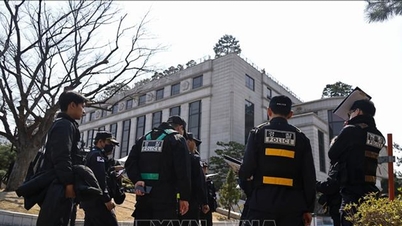








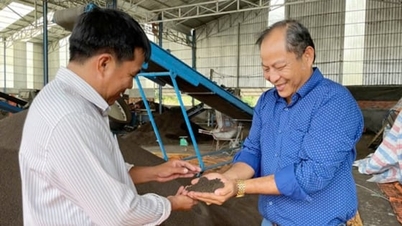


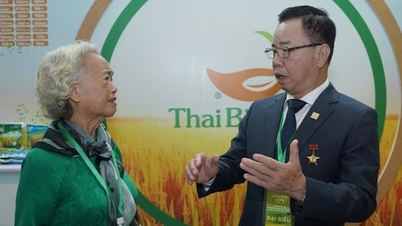
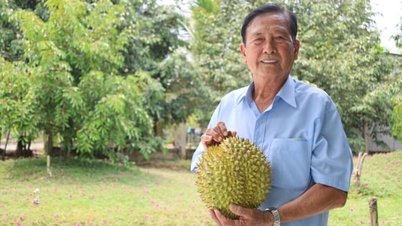
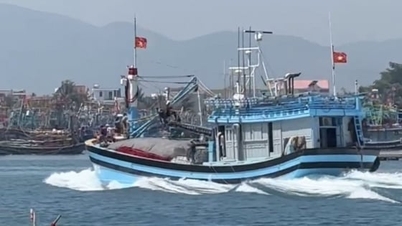




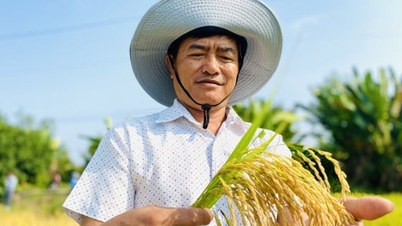
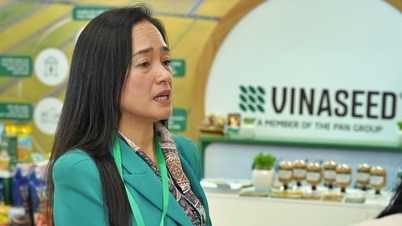
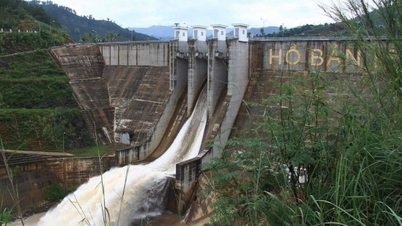














































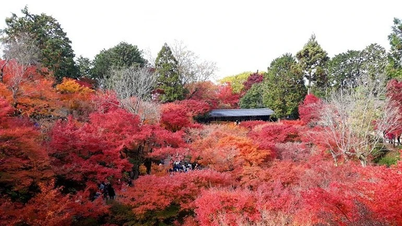




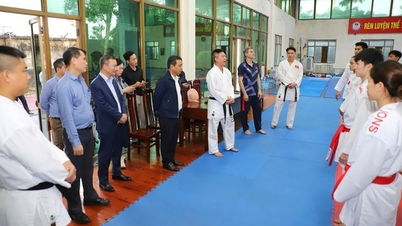

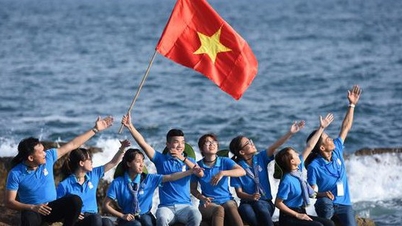


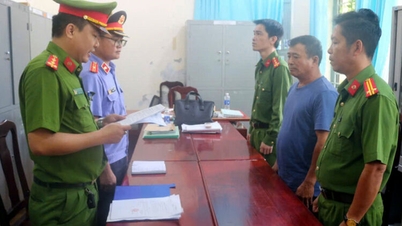

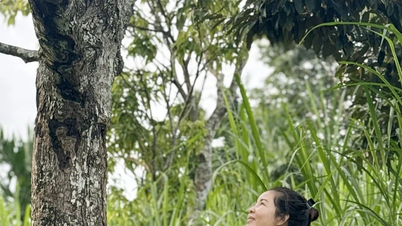

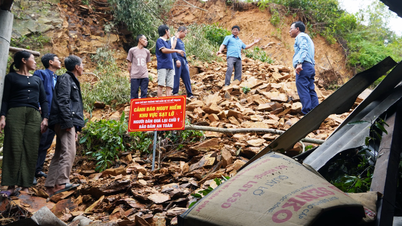


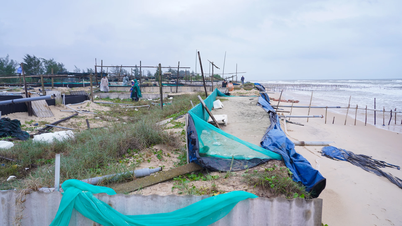
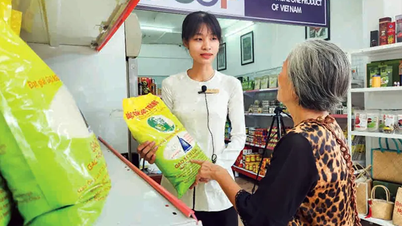






![Dong Nai OCOP transition: [Article 3] Linking tourism with OCOP product consumption](https://vphoto.vietnam.vn/thumb/402x226/vietnam/resource/IMAGE/2025/11/10/1762739199309_1324-2740-7_n-162543_981.jpeg)






Comment (0)